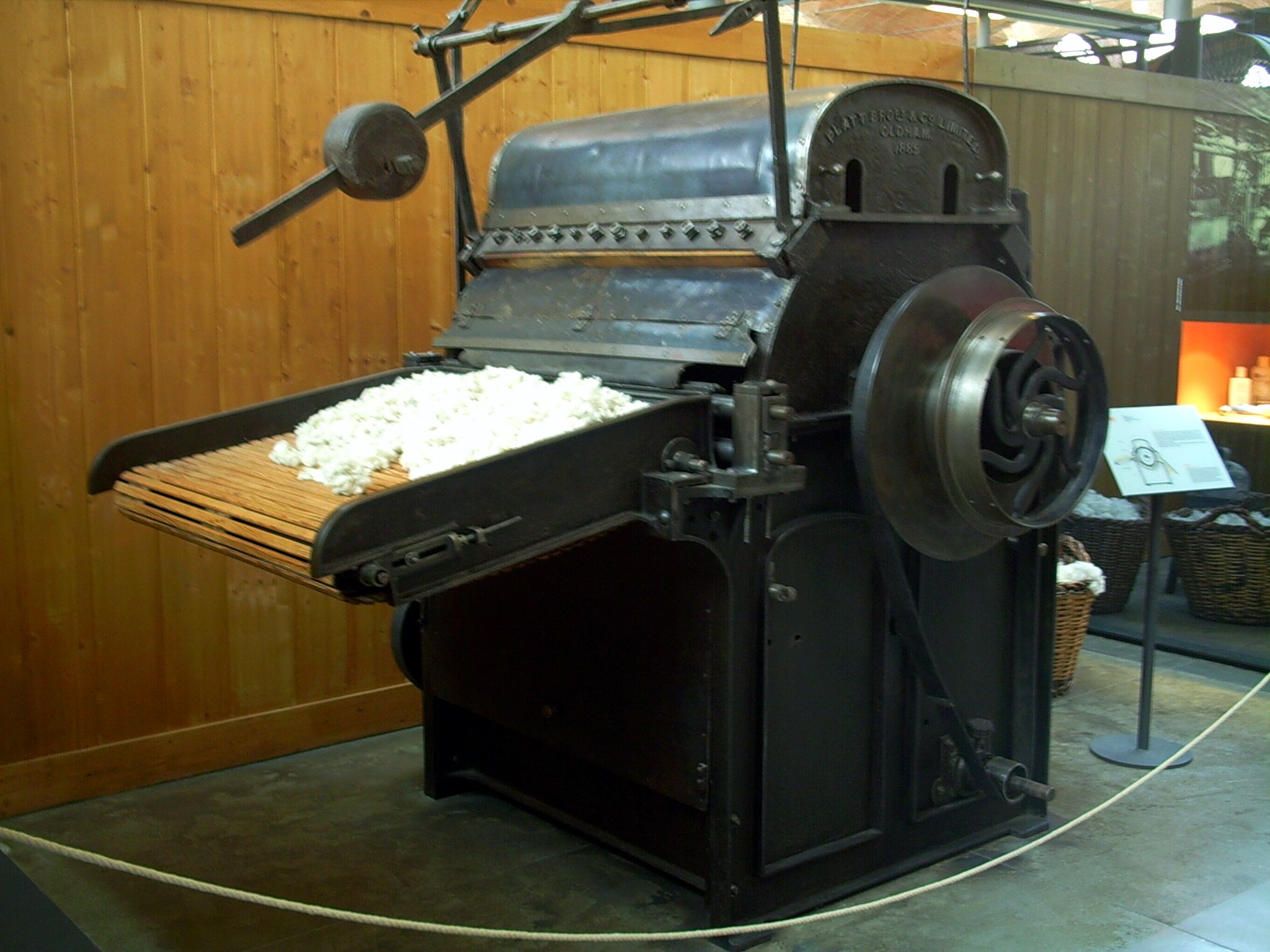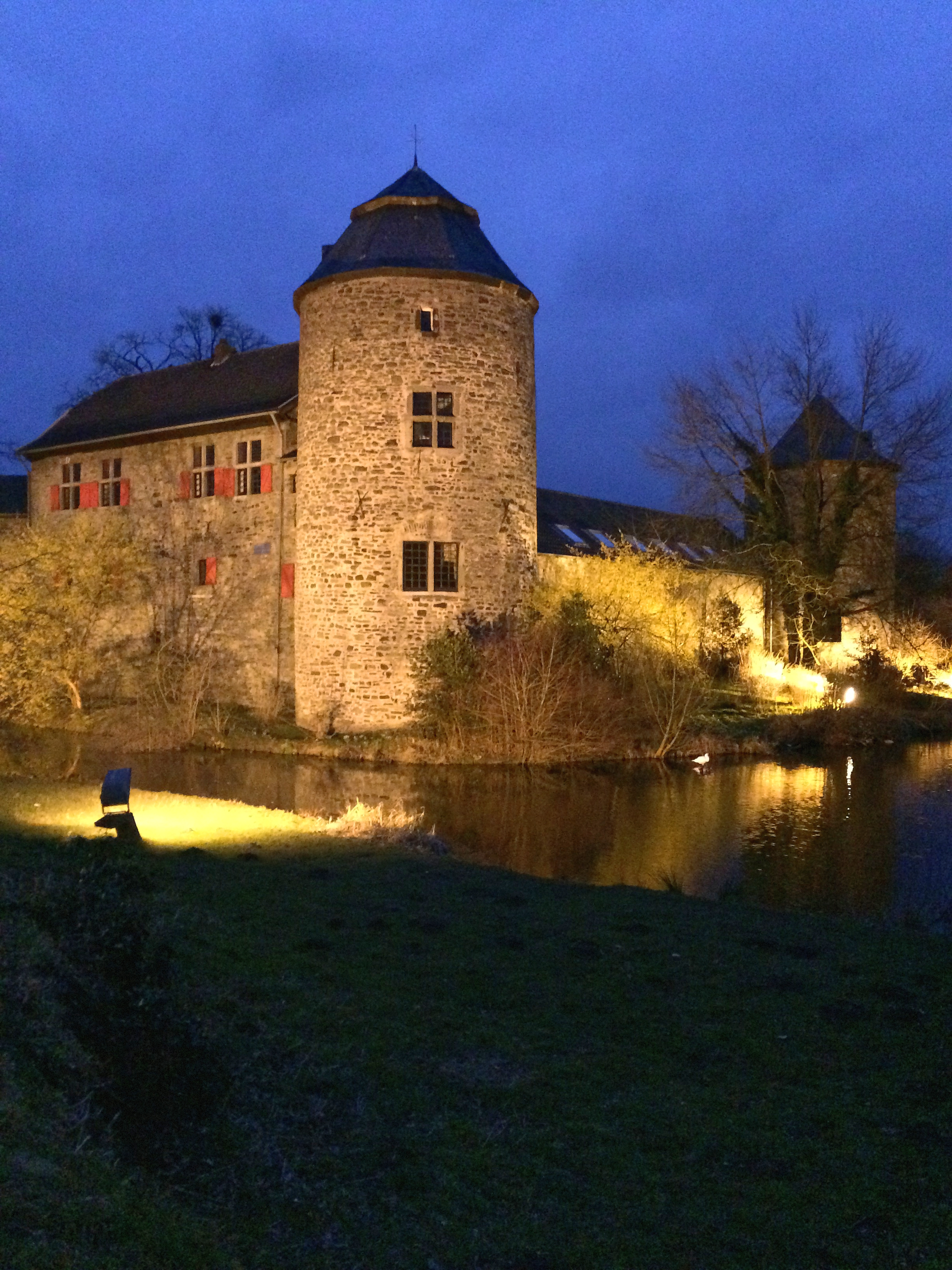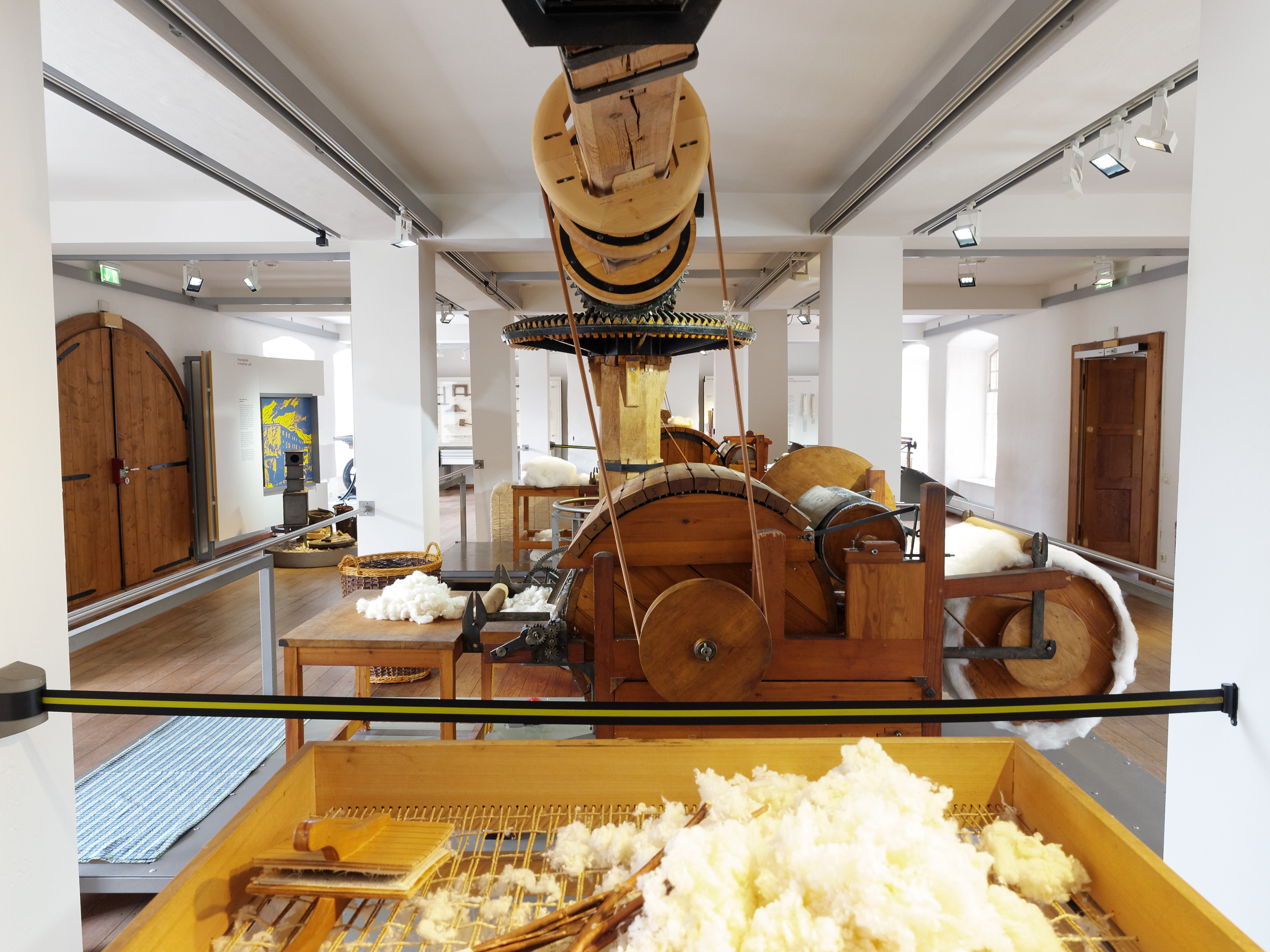|
Water Frame
The water frame is a spinning frame that is powered by a water-wheel. History Richard Arkwright, who patented the technology in 1769, designed a model for the production of cotton thread, which was first used in 1765. The Arkwright water frame was able to spin 96 threads at a time, which was an easier and faster method than ever before. The design was partly based on a spinning machine built for Thomas Highs by clockmaker John Kay, who was hired by Arkwright. Being run on water power, it produced stronger and harder yarn than the "spinning jenny", and propelled the adoption of the modern factory system. Another water-powered frame for the production of textiles was developed in 1760 in the early industrialized town of Elberfeld, Prussia (now in Wuppertal, Germany), by German bleach plant owner Johann Heinrich Bockmühl. The name ''water frame'' is derived from the use of a water wheel to drive a number of spinning frames. The water wheel provided more power to the spin ... [...More Info...] [...Related Items...] OR: [Wikipedia] [Google] [Baidu] |
River Derwent, Derbyshire
The Derwent is a river in Derbyshire, England. It is long and is a tributary of the River Trent, which it joins south of Derby. Throughout its course, the river mostly flows through the Peak District and its foothills. Much of the river's route, with the exception of the city of Derby, is rural. However, the river has also seen many human uses, and between Matlock and Derby was one of the cradles of the Industrial Revolution. It is the site of the Derwent Valley Mills, the first industrial-scale cotton mills. Today it provides a water supply to several surrounding cities, and its steep-sided valley is an important communications corridor through the uplands of the Peak District. The scenery of the Derwent valley attracts many tourists. The upper reaches pass through the Peak District National Park, whilst the middle reaches around the old spa town of Matlock Bath offer souvenir shops and amusement arcades, together with attractions such as the Heights of Abraham and ... [...More Info...] [...Related Items...] OR: [Wikipedia] [Google] [Baidu] |
Textile Machinery
Textile manufacturing or textile engineering is a major Textile industry, industry. It is largely based on the conversion of fibre into yarn, then yarn into fabric. These are then Dyeing, dyed or printed, fabricated into cloth which is then converted into useful goods such as clothing, Linens, household items, upholstery and various industrial products. Different types of fibres are used to produce yarn. Cotton remains the most widely used and common natural fiber making up 90% of all-natural fibers used in the textile industry. People often use cotton clothing and accessories because of comfort, not limited to different weathers. There are many variable processes available at the Spinning (textiles), spinning and fabric-forming stages coupled with the complexities of the Finishing (textiles), finishing and colouration processes to the production of a wide range of products. History Textile manufacturing in the modern era is an evolved form of the art and craft industries. Unti ... [...More Info...] [...Related Items...] OR: [Wikipedia] [Google] [Baidu] |
YouTube
YouTube is an American social media and online video sharing platform owned by Google. YouTube was founded on February 14, 2005, by Steve Chen, Chad Hurley, and Jawed Karim who were three former employees of PayPal. Headquartered in San Bruno, California, it is the second-most-visited website in the world, after Google Search. In January 2024, YouTube had more than 2.7billion monthly active users, who collectively watched more than one billion hours of videos every day. , videos were being uploaded to the platform at a rate of more than 500 hours of content per minute, and , there were approximately 14.8billion videos in total. On November 13, 2006, YouTube was purchased by Google for $1.65 billion (equivalent to $ billion in ). Google expanded YouTube's business model of generating revenue from advertisements alone, to offering paid content such as movies and exclusive content produced by and for YouTube. It also offers YouTube Premium, a paid subs ... [...More Info...] [...Related Items...] OR: [Wikipedia] [Google] [Baidu] |
Hydropower
Hydropower (from Ancient Greek -, "water"), also known as water power or water energy, is the use of falling or fast-running water to Electricity generation, produce electricity or to power machines. This is achieved by energy transformation, converting the Potential energy, gravitational potential or kinetic energy of a water source to produce power. Hydropower is a method of sustainable energy production. Hydropower is now used principally for Hydroelectricity, hydroelectric power generation, and is also applied as one half of an energy storage system known as pumped-storage hydroelectricity. Hydropower is an attractive alternative to fossil fuels as it does not directly produce Carbon dioxide in Earth's atmosphere, carbon dioxide or other Air pollution, atmospheric pollutants and it provides a relatively consistent source of power. Nonetheless, it has economic, sociological, and environmental downsides and requires a sufficiently energetic source of water, such as a river or ... [...More Info...] [...Related Items...] OR: [Wikipedia] [Google] [Baidu] |
Pawtucket, Rhode Island
Pawtucket ( ) is a city in Providence County, Rhode Island, United States. The population was 75,604 at the 2020 United States census, 2020 census, making the city the fourth-largest in the state. Pawtucket borders Providence, Rhode Island, Providence and East Providence, Rhode Island, East Providence to the south, Central Falls, Rhode Island, Central Falls and Lincoln, Rhode Island, Lincoln to the north, and North Providence, Rhode Island, North Providence to the west. The city also borders the Massachusetts municipalities of Seekonk, Massachusetts, Seekonk and Attleboro, Massachusetts, Attleboro. Pawtucket was an early and important center of textile manufacturing. It is home to Slater Mill, a historic textile mill recognized for helping to found the Industrial Revolution in the United States. History The name "Pawtucket" comes from the Algonquian languages, Algonquian word for "river fall." The Pawtucket region was said to have been one of the most populous places in New ... [...More Info...] [...Related Items...] OR: [Wikipedia] [Google] [Baidu] |
Slater Mill Historic Site
The Slater Mill is a historic water-powered textile mill complex on the banks of the Blackstone River in Pawtucket, Rhode Island, modeled after cotton spinning mills first established in England. It is the first water-powered cotton spinning mill in America to use the Arkwright system of cotton spinning as developed by Richard Arkwright. The mill's founder, Samuel Slater, apprenticed as a young man with industrialist Jedediah Strutt in Belper, England. Shortly after emigrating to the United States, Slater was hired by Moses Brown of Providence, Rhode Island to produce a working set of machines necessary to spin cotton yarn using water power. Construction of the machines was completed in 1793, as well as a dam, waterway, waterwheel, and mill. Manufacturing was based on Arkwright's cotton spinning system, which included carding, drawing, and spinning machines. Slater initially hired children and families to work in his mill, establishing a pattern that was replicated throughout ... [...More Info...] [...Related Items...] OR: [Wikipedia] [Google] [Baidu] |
Moses Brown
Moses Brown (September 23, 1738 – September 6, 1836) was an American abolitionist, Quaker, and industrialist from what became known as Rhode Island. With his three brothers, he co-founded what became Brown University. Later he supported the founding and revival of the Moses Brown School. As an industrialist, he supported the development, design and construction of some of the first factories for spinning machines during the American industrial revolution. This included the Slater Mill, which was the first modern factory in America. While he was an abolitionist since before the Revolution, the New England textile industry was dependent on cotton produced by enslaved African Americans in the Deep South. He did help gain anti-slave trade legislation in Rhode Island and later in Congress. Early life Moses Brown was born in Providence in the Colony of Rhode Island and Providence Plantations on September 23, 1738, the son of James Brown II and Hope (Power) Brown. He was the ... [...More Info...] [...Related Items...] OR: [Wikipedia] [Google] [Baidu] |
New York City
New York, often called New York City (NYC), is the most populous city in the United States, located at the southern tip of New York State on one of the world's largest natural harbors. The city comprises five boroughs, each coextensive with a respective county. The city is the geographical and demographic center of both the Northeast megalopolis and the New York metropolitan area, the largest metropolitan area in the United States by both population and urban area. New York is a global center of finance and commerce, culture, technology, entertainment and media, academics, and scientific output, the arts and fashion, and, as home to the headquarters of the United Nations, international diplomacy. With an estimated population in 2024 of 8,478,072 distributed over , the city is the most densely populated major city in the United States. New York City has more than double the population of Los Angeles, the nation's second-most populous city. [...More Info...] [...Related Items...] OR: [Wikipedia] [Google] [Baidu] |
Samuel Slater
Samuel Slater (June 9, 1768 – April 21, 1835) was an early English-American industrialist known as the "Father of the American Industrial Revolution", a phrase coined by Andrew Jackson, and the "Father of the American Factory System". In the United Kingdom, he was called "Slater the Traitor" and "Sam the Slate" because he brought British textile technology to the United States, modifying it for American use. He memorized the textile factory machinery designs as an apprentice to a pioneer in the British industry before migrating to the U.S. at the age of 21. Slater designed the first textile mill in the U.S. He later went into business for himself, developing a family business with his sons. He eventually owned 13 spinning mills and developed tenant farms and company towns around them. One of these towns was Slatersville, Rhode Island. Early life and education Slater was born in Belper, Derbyshire, England, to William and Elizabeth Slater, on June 9, 1768, the fifth son in a ... [...More Info...] [...Related Items...] OR: [Wikipedia] [Google] [Baidu] |
Ratingen
Ratingen (; ) is a town in the district of Mettmann in North Rhine-Westphalia, Germany. It lies in the northwestern part of Berg about 12 km northeast of Düsseldorf. Administration With a communal reform of 1975 the independent municipalities of Breitscheid, Eggerscheidt, Hösel, Lintorf (seat Angerland) as well as the local part of Homberg and the municipality of Homberg-Meiersberg (seat Hubbelrath) were added to the city of Ratingen. History Ratingen was settled before 849. From the Middle Ages the Ratingen area belonged to the count and later dukes of Berg. On December 11, 1276 the settlement received city rights. Ratingen was one of the four places of Berg which experienced an economic boom in the end of the Middle Ages, but slowed during the Thirty Years' War. At the beginning of the Industrial Age, the first manufacturing plants opened in 1783. In Cromford the first mechanical spinnery of Europe opened, which grew into the '' Textilfabrik Cromford'', now part ... [...More Info...] [...Related Items...] OR: [Wikipedia] [Google] [Baidu] |
Textilfabrik Cromford
The Textilfabrik Cromford in Ratingen, North Rhine-Westphalia, Germany was built in 1783 by Johann Gottfried Brügelmann. It was the first Cotton mill, cotton spinning mill on the Europe, European mainland. Today it is an museum, industrial museum specialising in textile history. History Brügelmann, came from a rich Elberfelder trading family. He heard of the Waterframes, an invention of Richard Arkwright in the Derbyshire village of Cromford, England, in the early 1770s – during a long stay in Basel. On his return to Wuppertal the cotton market was booming, it was impossible to fulfill the demand. Brügelmann recognised the potential that Arkwright's mechanising of the labour-intensive Spinning (textiles), Spinning process offered. As a rule of thumb each weaving, weaver needed all the yarn that 10 hand-spinners could produce. Richard Arkwright vigorously guarded his patent. He would not reveal how the water frame worked, keeping the details secret. Furthermore, the Britis ... [...More Info...] [...Related Items...] OR: [Wikipedia] [Google] [Baidu] |









